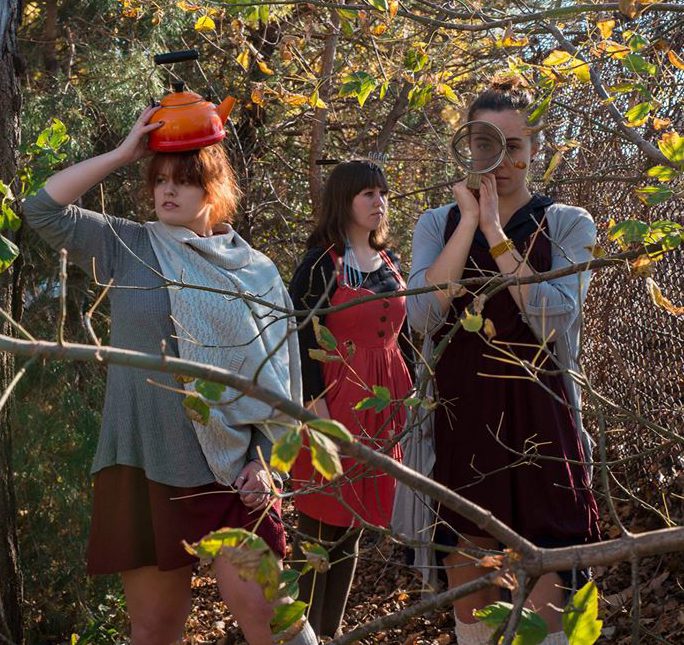
In this iteration, nine dances created by eleven individuals came one after the other, with ideas ranging from Dan Derks and Dina Liberatore’s real-time sound manipulation with improvised dance, to Emily Loar’s metaphorical and literal love affair with beets. Janell Huckstadt’s Winter, Crocus utilized plastic take-away bags (now somewhat hard to source, I imagine) attached to Corliss, Lindsey Lee and Andy Slavin in a beautiful mess set to out-of-key Rachmaninoff, while Porscha Spells’ Gourmandize was both an exercise in restraint and excess as two dancers donning white lace collars and training bras obeyed a seated, strict unison of gestures while smearing their faces with kiwis and fruit juice.
In her pre-show announcements, Jamie Corliss stated that “Mess Hall is messy.” Each work on the program is presented at varying stages of development, “and, we are here to validate all of that,” she said.
Me too.
Taking Mess Hall at face value, it’s hard to say if this process yielded different results than a traditional one-artist-per-rehearsal scenario, since we are only privy to the end result: a 2-show, low-tech engagement featuring emerging choreographers and snippets of works at various states of completion. What surprised me, however, was the arists’ maturity and lack of similarity between each piece, especially given the collaborative process and intense amount of suggestions I image each of these young dance makers received from each other.
Mess Hall left me questioning what happens to these works now that it’s over, but perhaps it doesn’t matter. With most of these choreographers fresh out of school, the excuse to simply make something and put it out there can be highly beneficial; the chance to develop it further or produce the work in a formal concert might be a bonus for future Mess Halls to consider.
